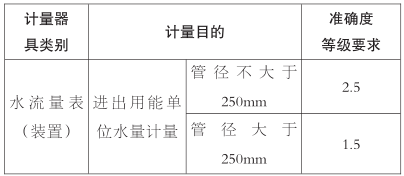1 Installation Environment and Requirements for Tables for Measuring Groundwater Resources
The deeper and deeper motor wells in the field have caused deeper aquifers because of drought and large amounts of groundwater being used for irrigation. This means that groundwater resources are becoming increasingly scarce. Irrigation water is increasingly tense, and the measurement of groundwater resources should be mentioned on the agenda. The installation of a metering meter can rationally allocate and effectively use limited water resources, increase irrigation efficiency, and eliminate unnecessary waste. Exceeding the allocated amount of water, reasonable charges will more effectively restrict and eradicate the loss of increasingly scarce water resources.
General motor wells are in the wild and rarely in the village. Due to the construction cost, the construction of the wellhead pumping station has limited space, and the elbows, tees and valves are relatively concentrated, and the installation distance of the flowmeters is required to be compact. Generally, the straight pipe sections cannot be stretched. In addition, the pressure and pulsation at the pump port of the centrifugal pump are large. The fluctuation of the grid voltage and the electromagnetic strength of the motor all have a certain influence on the flow meter. In addition, because groundwater is directly pumped, fine water and fine sand will be floated in the water, which will cause wear of the flowmeter. At the same time, there will be mixed flow of gas, liquid, and solid, and flowmeters will not be affected. Because it is a trade settlement table, the accuracy is generally higher (see Table 1).
Table 1 Accuracy Level Requirements for Energy Consumption Unit Energy Sources

The requirements of flowmeters for measuring groundwater resources require that the pipes, elbows, tees, and valves, etc., in the upper reaches of the instrument are relatively concentrated, but the flowmeter must be as short as possible for the installation of straight straight pipe sections; the pressure at the pump ports should be greater than the one selected. The flow meter must have a certain compressive strength; at the same time, the pulsation of the fluid at the pump port is large and the fluctuation of the grid voltage and the electromagnetic strength of the motor, so the selected flow meter must have a certain resistance to the pump pulsation and voltage fluctuation as well as electromagnetic strength. Capacity; due to the fine sand floating in the water, it will cause wear on the flow meter, so the selected flow meter must have a certain wear resistance, preferably no moving parts and sharp parts, the accuracy is lasting, and the accuracy is The grade must also meet the requirements of Table 1.
2 Comparison of the characteristics of the table for measuring groundwater resources
Meters commonly used for water resources measurement include water meters, turbines, orifice plates, vortex streets, ultrasonics, electromagnetic flow meters, and V-cone flowmeters. The related flow meter features are shown in Table 2.
Table 2 Comparison of Environmental Requirements for Several Types of Tables that Can Be Used for Groundwater Resource Measurement

It can be seen from Table 2 that due to the working principle of the vortex flowmeter, the anti-pulsation at the pump port is not good. Turbine, orifice, vortex, ultrasonic, and electromagnetic flowmeters all require long straight sections, generally requiring upstream requirements of 10D to 20D and downstream requirements of 5D to 10D. Turbine Flowmeters High-speed rotating impellers, shafts, and bearings are easily worn by fine sand floating in water. Ultrasonic and electromagnetic flowmeters are expensive to produce. The edge of the orifice plate orifice plate is sharp and easy to wear, and the pressure loss is large. Although the water meter does not require a straight pipe section, it has a rotating impeller, and non-metal shafts and bearings are more easily worn by the fine sand floating in the water. V cone flowmeter straight pipe section requirements are relatively short, the general upstream requirements 0D ~ 3D, downstream requirements 0D ~ 1D, anti-pulse, fluctuations and electromagnetic better, there is no rotating parts, good wear resistance, so it can extend the service life and Test cycle. From the installation of items 5 and 6 in Table 2, the first, second and third aspects of anti-pulsation, fluctuation, and electromagnetic, and the fourth and eighth wear resistance, there is the seventh pressure loss, the ninth item The test cycle can be extended. V cone flowmeter has many advantages for the measurement of groundwater resources.
Pig Farming Equipmen Stainless Steel Trough for Sow on Farrowing Crate
Summary
Thickening tall back stainless steel trough for sow on farrowing crate,no feed slop over,anti-corrosion,no rust and easy to clean,long service life.
Advantages
1. The Sow Feeder used ss 304 material, it will not rust.
2. Has smoothly surface.
3. Eay to Clean and Install.
4. It has long service life.
5. The feeder can be rotated, which make it easy to clean.
Sow Feeder,Sows Trough,Automatic Pig Feed Trough,Pig Feed Trough
Ningbo New Glory International Trading Co.,Ltd , https://www.stock-farming.com